Choosing which flowers and shrubs to plant in your garden or yard can be a daunting task. While it’s tempting to choose plants purely based on their looks, it’s crucial to consider each individual plant’s specific requirements, such as the amount of sunlight, water, and soil conditions they need to thrive.
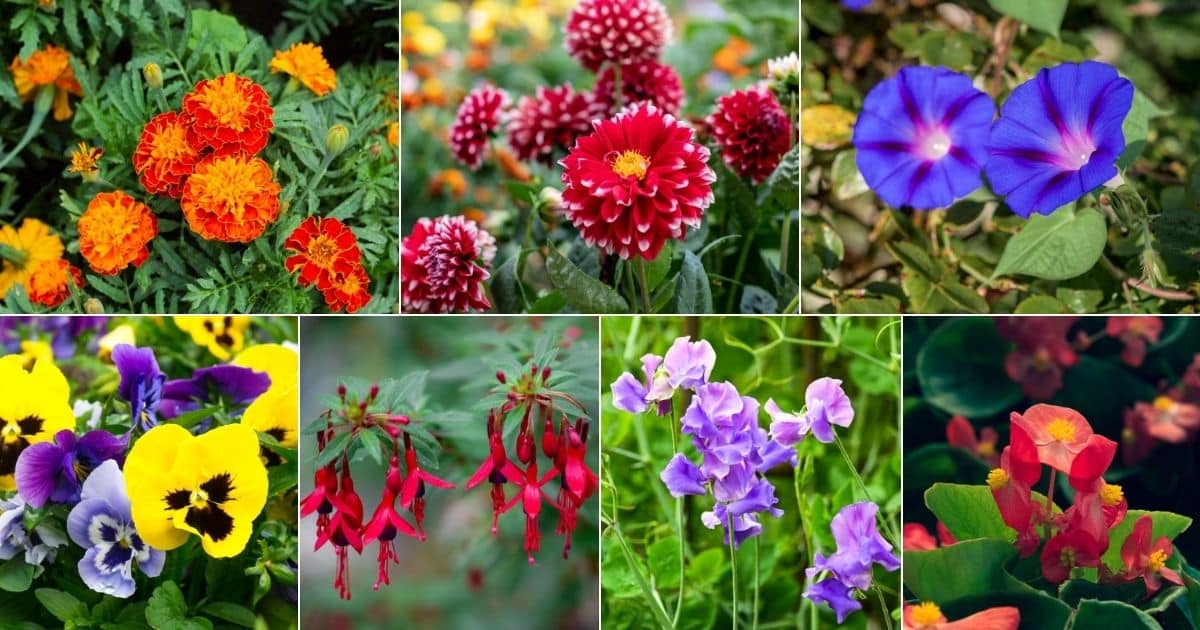
With the right selection of plants, anyone can create a stunning and thriving yard, regardless of their gardening experience. If you’re just starting out and want to build your green thumb, begin with low-maintenance plants that are easy to grow. We’ve compiled a list of 30 of the most popular flowers and shrubs that require minimal effort and can be grown by just about anyone. Here are some of our top picks:
Flowering Shrubs:
1. Oak Leaf Hydrangea (Hydrangea quercifolia)
2. Mexican Heather (Cuphea hyssopifolia)
3. American Arborvitae (Thuja occidentalis)
4. Azalea (Rhododendron spp.)
5. Forsythia (Forsythia x intermedia)
Flowers:
6. Shasta Daisy (Leucanthemum x superbum)
7. Lily (Lilium spp.)
8. Tulip (Genus Tulipa)
9. Beach Rose (Rosa rugosa)
10. Lilac (Syringa vulgaris)
11. Leadwort (Ceratostigma plumbaginoides)
12. Lavender (Lavandula spp.)
13. Sunflowers (Helianthus spp.)
14. Zinnia (Zinnia elegans)
15. Marigolds (Tagetes erecta)
16. Cosmos (Cosmos bipinnatus)
17. Morning Glory (Ipomoea purpurea)
18. Sweet Pea (Lathyrus odoratus)
19. Nasturtium (Tropaeolum majus)
20. Snapdragons (Antirrhinum majus)
21. Fuchsia (Fuchsia magellanica)
22. Geraniums (Pelargonium)
23. Dahlias (Dahlia pinnata)
24. Ornamental Onions (Allium schubertii)
25. Daffodils (Narcissus)
26. Daylilies (Hemerocallis fulva)
27. Lupines (Lupinus)
28. Wax Begonias (Begonia x semperflorens-cultorum)
29. Pansies (Viola tricolor var. hortensis)
30. Impatiens (Impatiens balsamina)
31. Carnation (Dianthus caryophyllus)
If you have any questions about these plants, check out our FAQ page. Remember, with the right information, anyone can create a beautiful yard full of thriving plants.
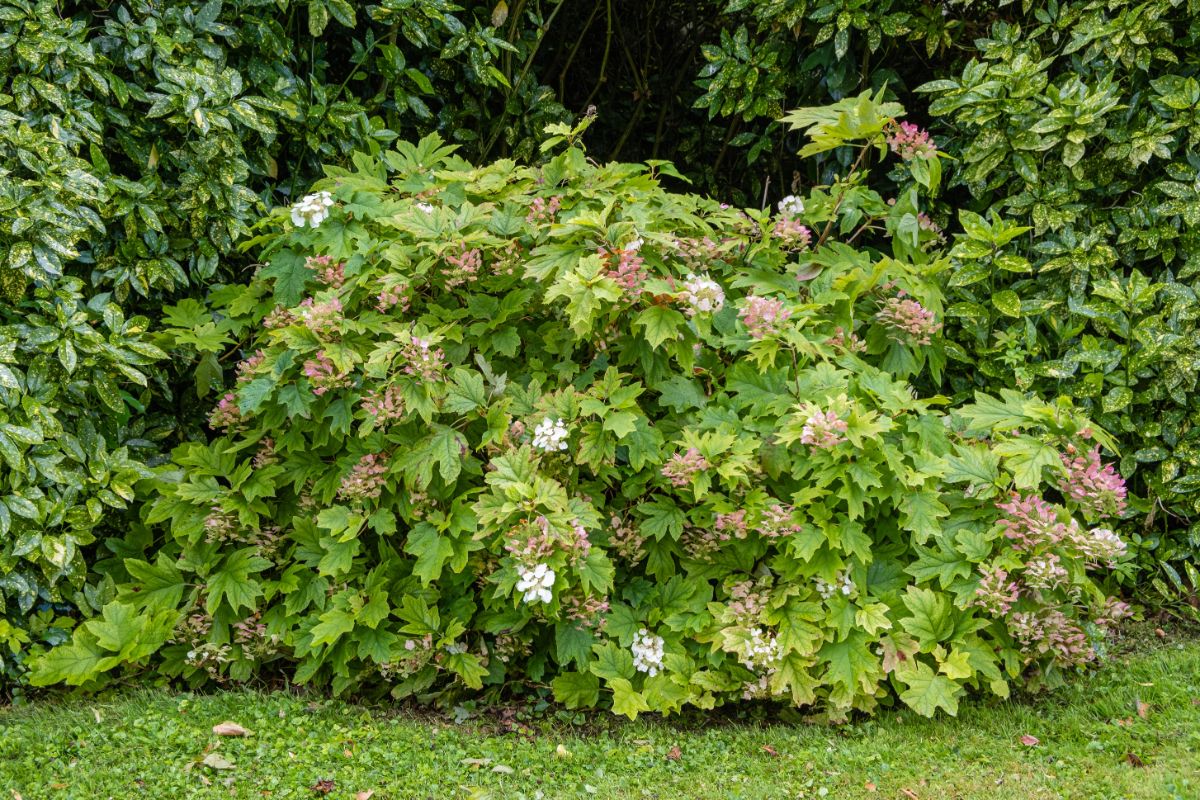
If you’re looking for an easy-to-care-for plant that exudes a classic beauty, then hydrangeas may be just what you need. These flowering deciduous shrubs are native to the Southeastern USA and are well-suited for full sun or partial shade environments in hardiness zones 5-9 (USDA). They require moderate watering and thrive in rich, evenly moist, and well-drained soil. You can expect beautiful blooms from May to July, with foliage colors ranging from green to red, rust, and purple. The flowers themselves are white to purplish-pink and can grow up to 4-8 feet tall. If you’re interested in planting hydrangeas from seed, aim for late autumn to early spring. An interesting fact about the oak leaf hydrangea is that its leaves change color from green to shades of red and purple during autumn, which can last well into winter.
Another plant worth considering is the Mexican Heather (Cuphea hyssopifolia).
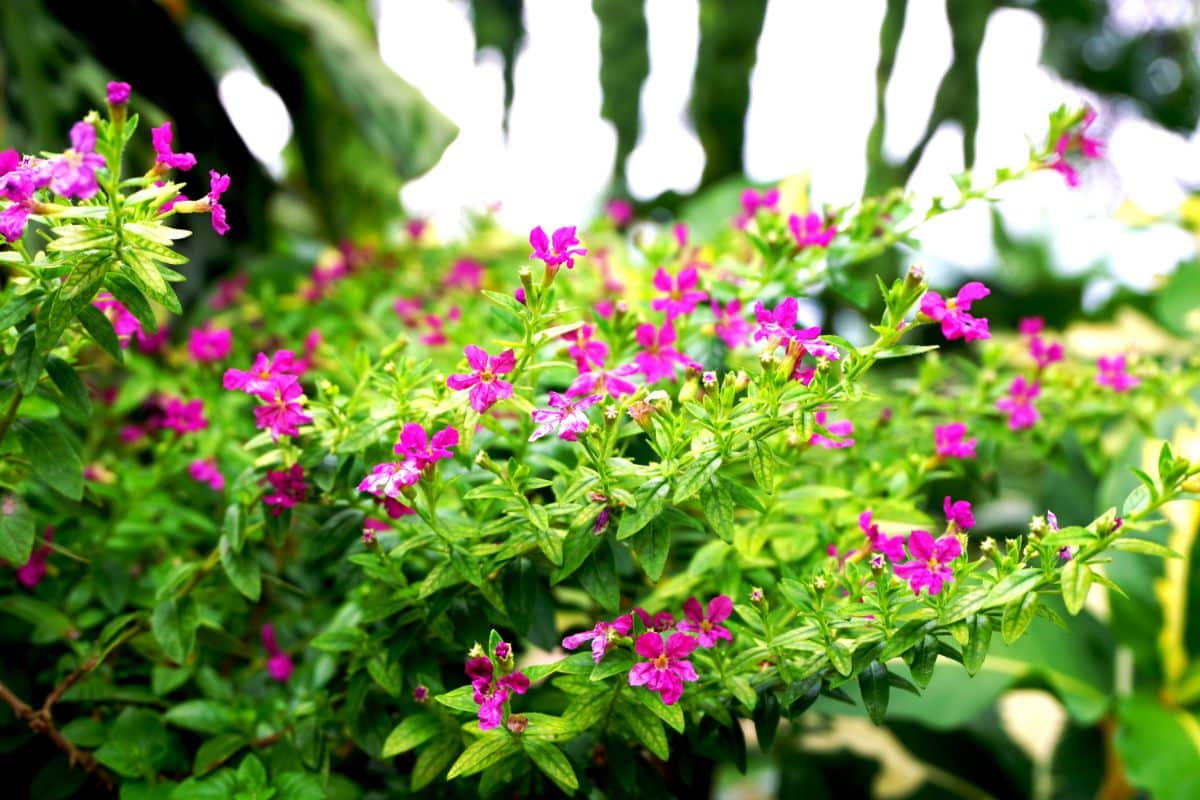
Mexican Heather is a beautiful shrub that thrives in warmer climates. This flowering evergreen shrub, which may be annual or perennial, is native to Central Mexico and prefers full sun or partial shade. It is hardy in zones 9b-11 of the USDA and requires moderate watering. Mexican Heather grows best in sandy, well-drained soil and blooms throughout the summer season. The foliage is green, while the flowers come in shades of pink, purple and white. Usually growing up to 2 ft. in height, Mexican Heather can be started indoors from seeds 8 to 10 weeks before the last frost. Interestingly, it is also known as “false heather”. Another popular shrub for landscaping is American Arborvitae (Thuja occidentalis).
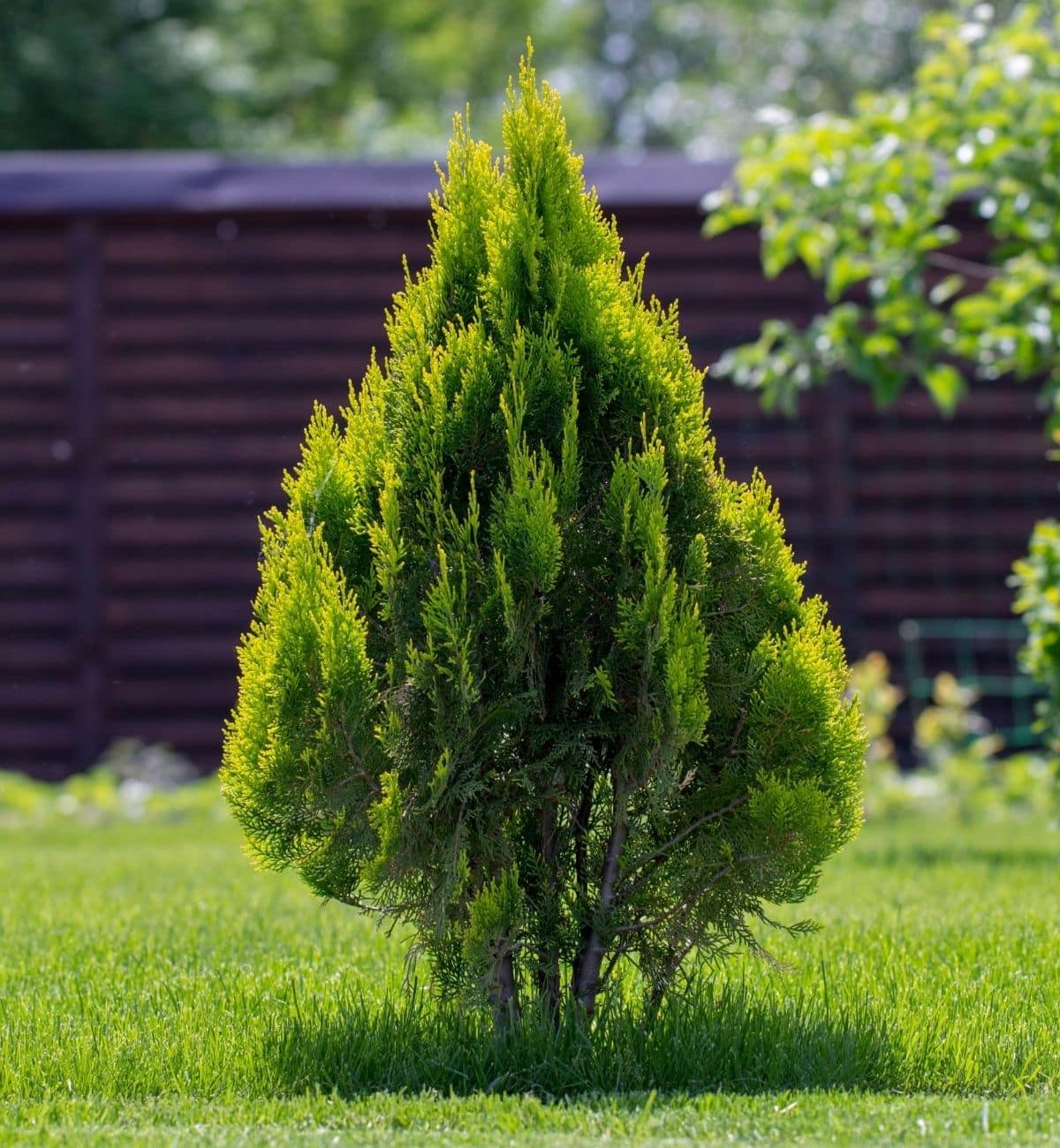
Arborvitae is a common choice for people looking to create borders or privacy screens. This evergreen tree or shrub is native to the north-central and north-eastern regions of the USA and thrives in full or partial sun with moderate to heavy watering. It has light green foliage that can range from yellow to brown and blooms in winter with light brown or reddish-brown flowers. With a height of 20 feet or more, arborvitae should be planted in moist to well-drained loam or clay soil during early spring or autumn before the frost. An intriguing fact about American Arborvitae is its use in construction and natural medicine as a topical treatment for skin conditions. Additionally, Azalea (Rhododendron spp.) is another plant variety to consider.
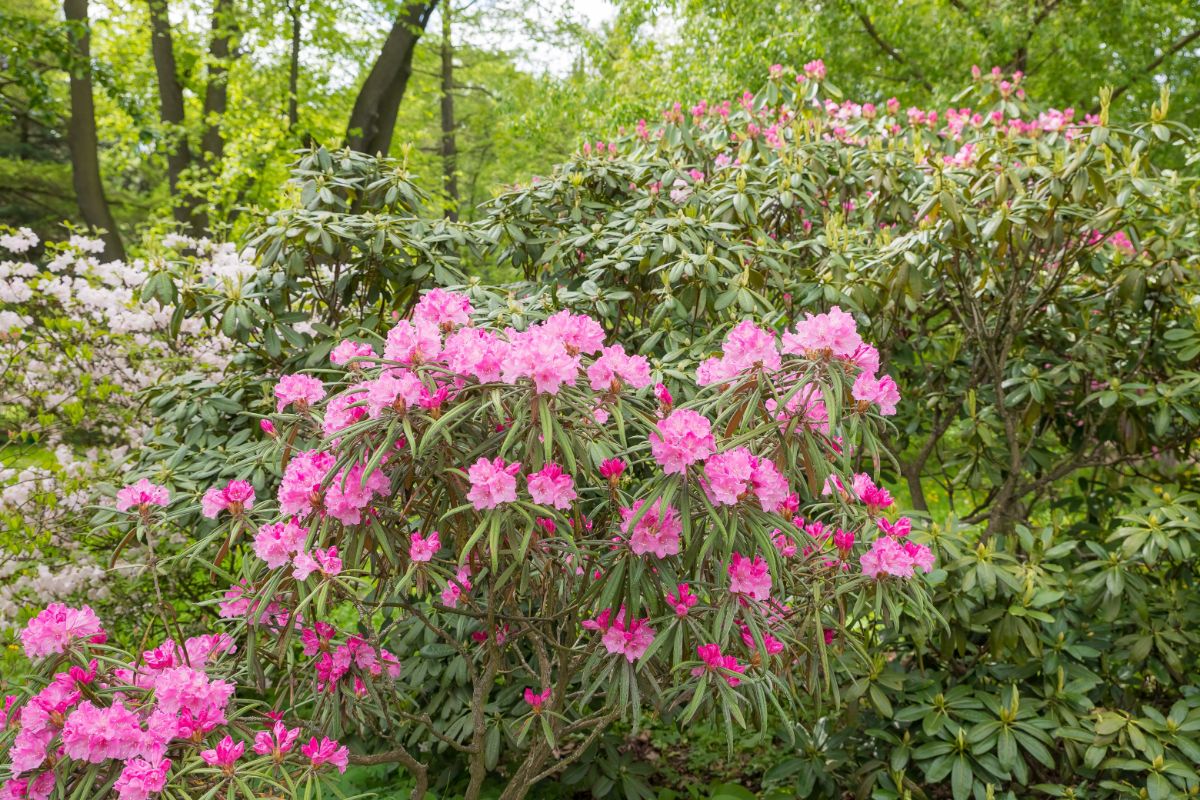
Azaleas are a popular choice for adding some flair to your garden due to their stunning appearance and early blooming season. These flowering shrubs can be either deciduous or evergreen, depending on the species, and prefer partial sun or partial shade. They thrive in hardiness zones 5-9 as designated by the USDA, and require moderate watering. Azaleas do best in cool, moist soil that is slightly acidic. Their glossy dark green foliage adds a beautiful contrast to the stunning peach, pink, coral, purple, and white flowers that bloom in early summer or spring. These shrubs can grow anywhere from 4-8 feet tall and should be planted between spring and early autumn. It’s worth noting that parts of the azalea plant are highly toxic, including the leaves and nectar. Interestingly, giving someone azalea flowers in a black vase has been known to be equated with a death threat.
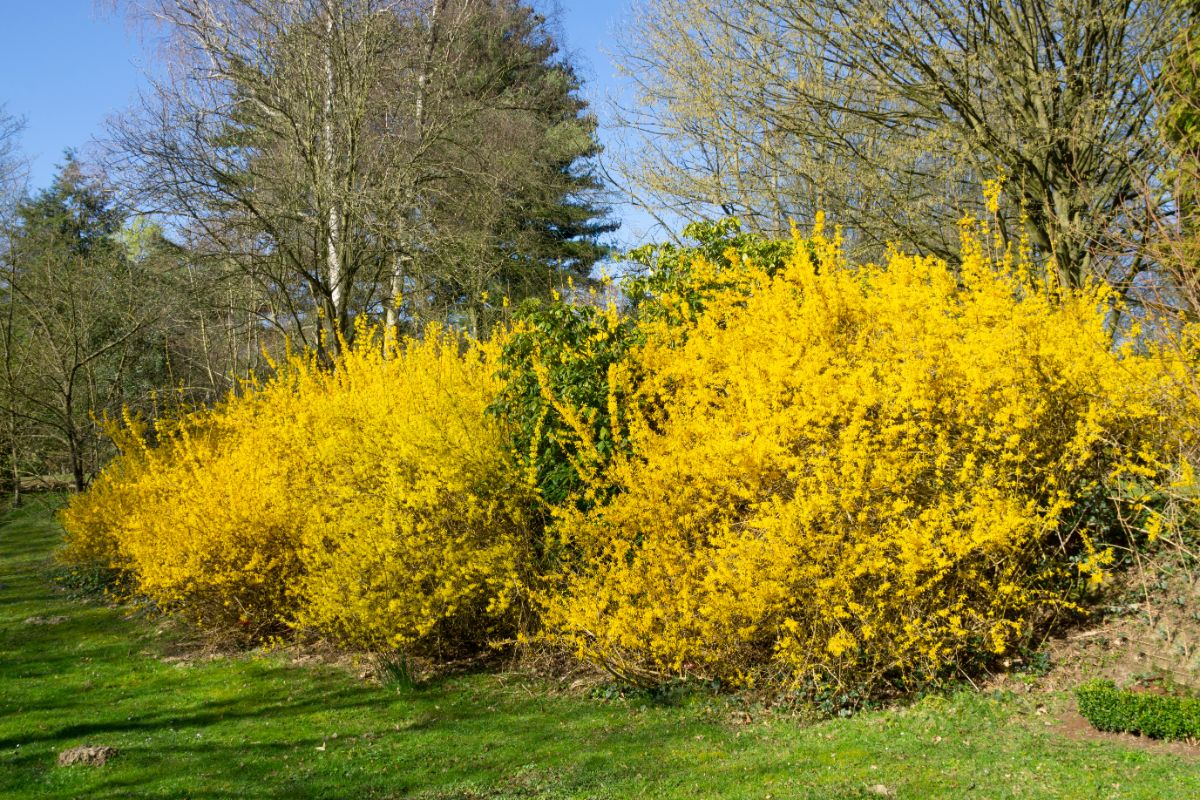
Forsythia is an incredibly resilient deciduous shrub that is known for being one of the first bloomers in the spring. It originates from Eastern Europe and Eastern Asia and thrives in full sun with loose and well-drained soil. Once established, it’s drought tolerant and only requires moderate watering. This shrub blooms from late January to early March and comes in a wide variety of foliage colors, including dark green, yellow, purple, and maroon. Its flower color is a vibrant golden-yellow, making it a stunning addition to any garden. When planting seeds, it’s best to do so in late autumn or early spring. Interestingly, this shrub was named after William Forsyth, the founder of the Royal Horticultural Society. Another great spring blooming plant is the Shasta Daisy, scientifically known as Leucanthemum x superbum.
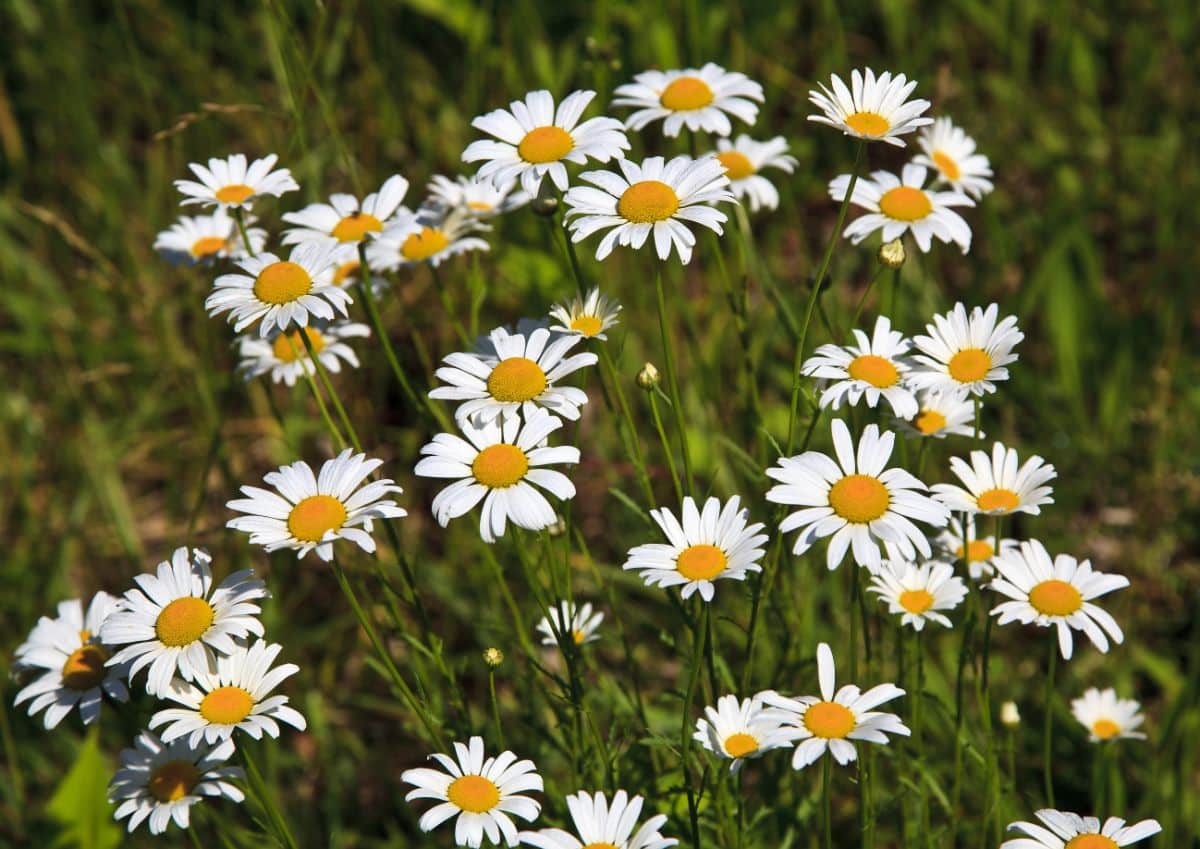
The Shasta daisy is a flowering plant that blooms for a long period of time. It is classified as an herbaceous perennial and can be found in Europe and the United States. The plant thrives in full sun or light shade and is hardy in zones 4-10 according to USDA standards. It requires light watering and well-drained soil with light moisture. The blooming season is from spring to autumn, with green foliage and white or yellow flowers that grow up to 6 inches to 4 feet in height. The best time to plant Shasta daisy seeds is during spring or early summer. Interestingly, the Shasta Daisy was created by Luther Burbank, an experimental botanist from California in 1901, who bred four different daisy varieties together to achieve ultra-white petals. Another popular flowering plant is the Lily (Lilium spp.).
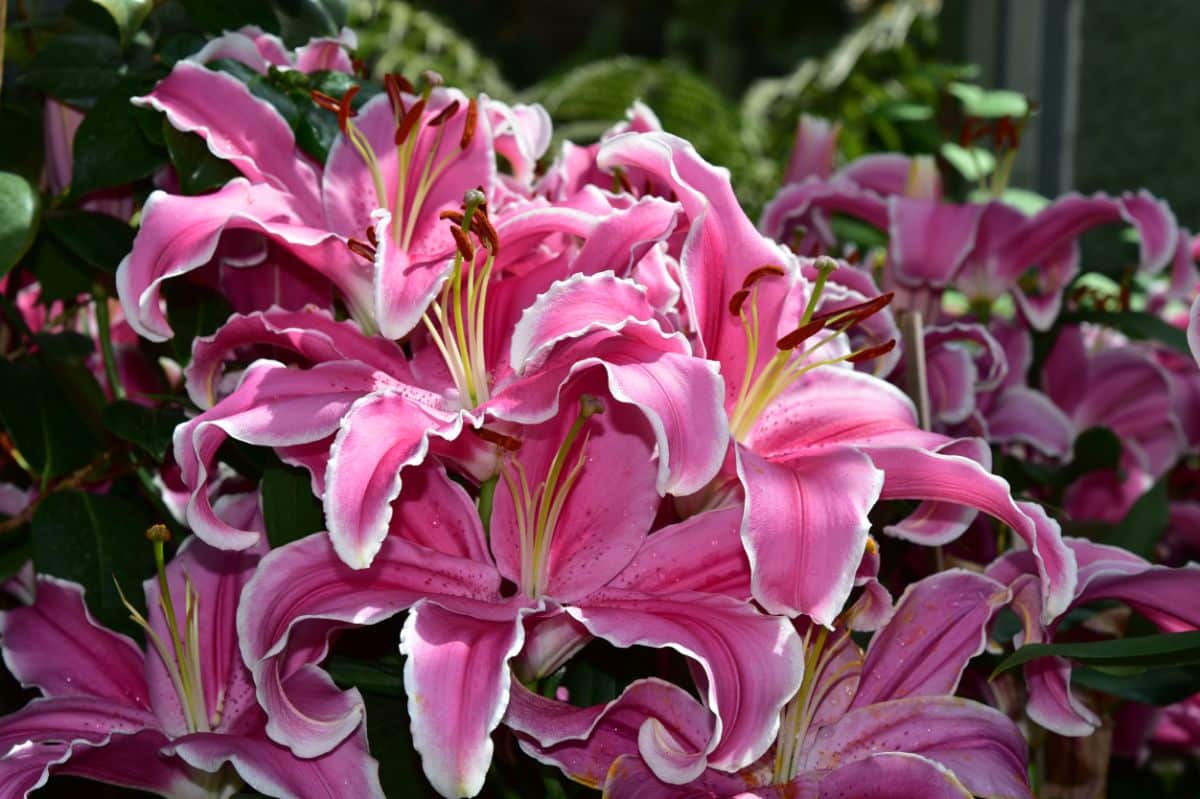
Lilies are a popular choice among gardeners, and one reason for this may be their reputation as low-maintenance plants that are difficult to kill. As a flowering perennial shrub native to the Northern hemisphere, lilies thrive in full or partial sun and require moderate to light levels of water, plus well-drained soil. They bloom in the spring, summer, and autumn, with flowers available in orange, pink, red, white, and yellow. Lilies typically grow to a height of 3-4 ft. To plant lily seeds, aim for the end of spring or beginning of summer. However, it’s worth noting that while lilies have a long history of being used as a natural remedy for various medical conditions, they are toxic to cats. On a different note, the tulip genus (Tulipa) is another popular flowering plant.
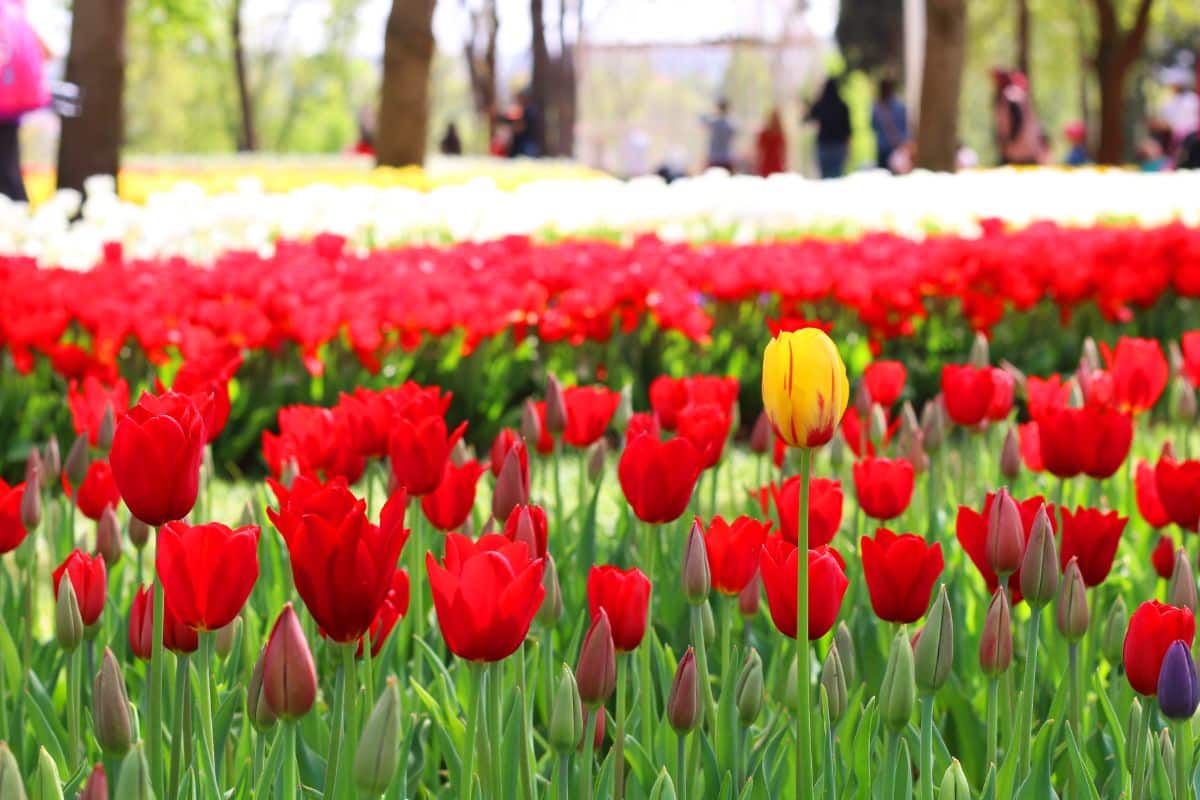
Tulips are the vibrant and stunning flowers of spring. They belong to the flower category and are native to Central Asia and Turkey. Tulips require full to medium sun exposure or average shade and thrive in hardiness zones 4-10 as per USDA standards. Moderate watering and well-drained loam soil provide optimal growing conditions for tulips, resulting in spring blooms with a blue-green foliage color and a wide range of flower colors, except for true blue. These flowers grow up to a height of 8-30 inches and can be sown in February. Did you know that tulips can also be used for culinary purposes? You can even use them as a substitute for onions and even make some wine out of them! Now, let’s move on to Beach Rose (Rosa rugosa).
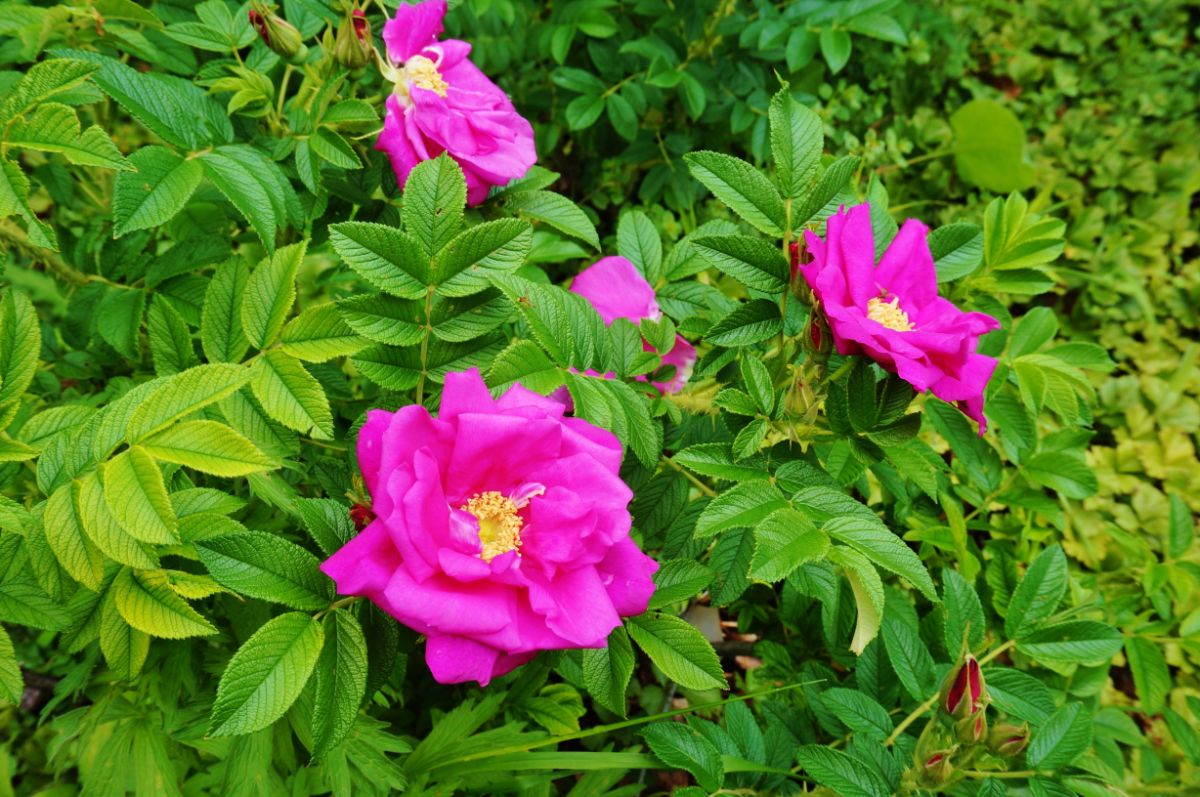
Growing roses doesn’t have to be difficult! Did you know that there are some varieties that are easier to cultivate than others? Take the Beach Rose, for example. This perennial flowering plant is native to China, Korea, and Japan and can thrive in full sun with moderate to light watering. It prefers well-drained yet moist soil and blooms in late spring to early summer with pink and scarlet flowers atop dark green foliage. Beach Rose also produces reddish-orange fruit called “hips” that can be used to make tea and jam. Another easy-to-grow option is the Lilac (Syringa vulgaris).
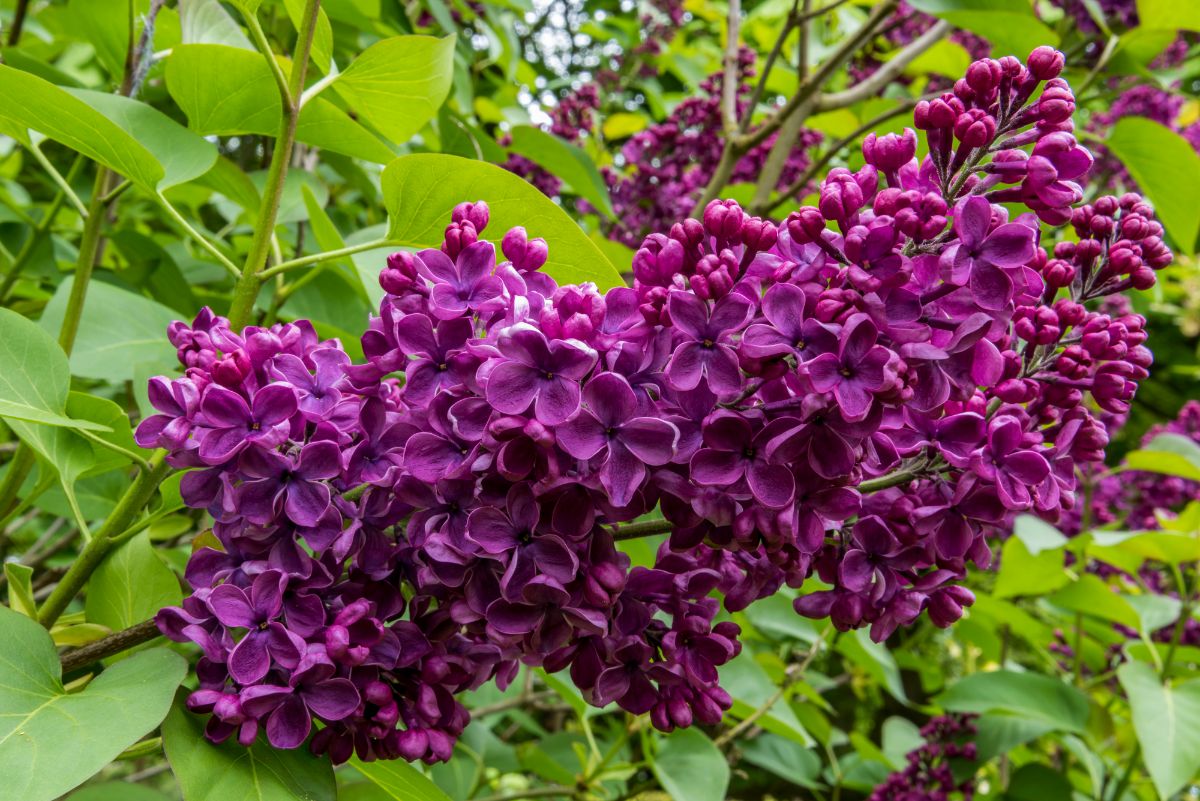
Did you know that lilacs come in at least six different colors? These deciduous flowering plants thrive in full sun and are hardy in zones 4-8 according to USDA guidelines. They prefer moderate to light watering and well-drained soil. Lilacs bloom in mid to late spring with green foliage and flowers that come in blue, pink, purple, red, white, and yellow. These plants can grow up to 8-12 ft. tall and should be planted in the spring. Interestingly, former U.S. President Thomas Jefferson had a love for lilacs and wrote extensively about them in his gardening book. Another beautiful flowering plant is Leadwort (Ceratostigma plumbaginoides).
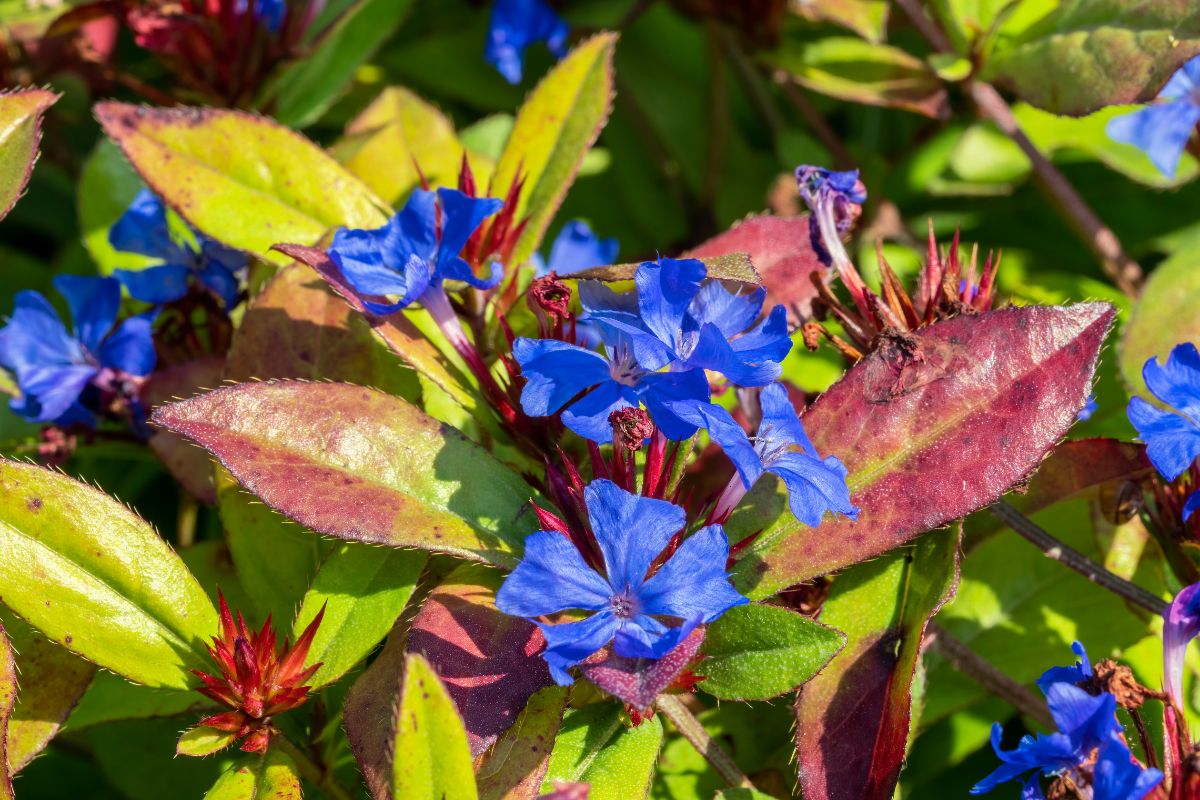
If you’re dealing with less-than-perfect soil or growing conditions, leadwort is an excellent option. This deciduous perennial flowering shrub originates from Western China and prefers full sun or partial shade at hardiness zones 5-9 (USDA). It requires moderate watering and thrives in well-drained soils. Leadwort blooms from July to September, with deep blue to burgundy-red flowers, while the foliage is green during summer and bronzy-red in autumn. Its height reaches up to 0.75-1 ft, making it perfect for small gardens or container planting. Interestingly, leadwort is a great beginner plant due to its resilience in poor soil and other less than favorable environments. If you’re looking for another easy-to-grow perennial, consider lavender (Lavandula spp.).
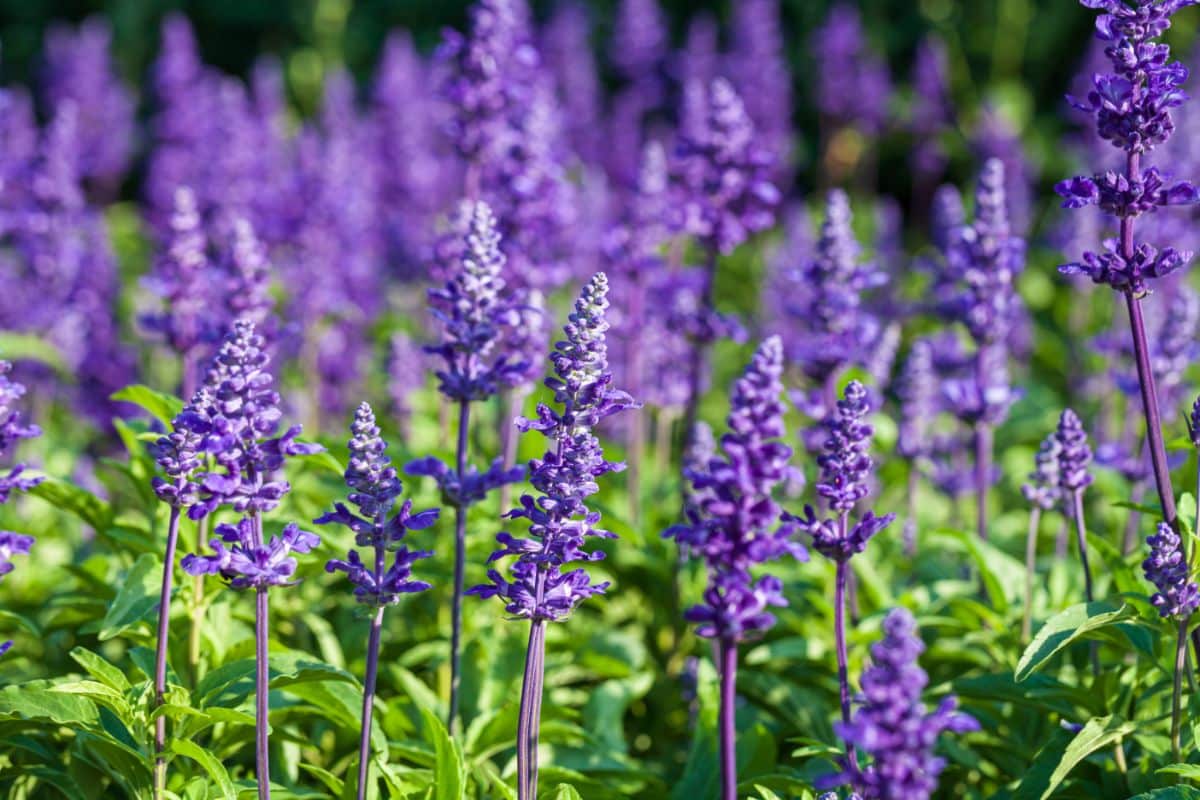
Lavender is not only a popular and easy-to-grow herbaceous perennial flowering plant, but it also has a multitude of uses, even in culinary applications. Originating from Europe, this plant thrives in full sun and can withstand moderate watering and drought once established. It prefers dry, well-draining soil and blooms in the summer months, boasting green foliage and beautiful, purple flowers that can reach up to three feet in height. For those interested in growing lavender from seeds, it is recommended to plant them in late March or April. Fun fact: Lavender has a rich history, having been utilized by ancient Egyptians during mummification and ancient Greeks as a sleep aid. Another popular plant, the sunflower (Helianthus spp.), is also worth considering for your garden.
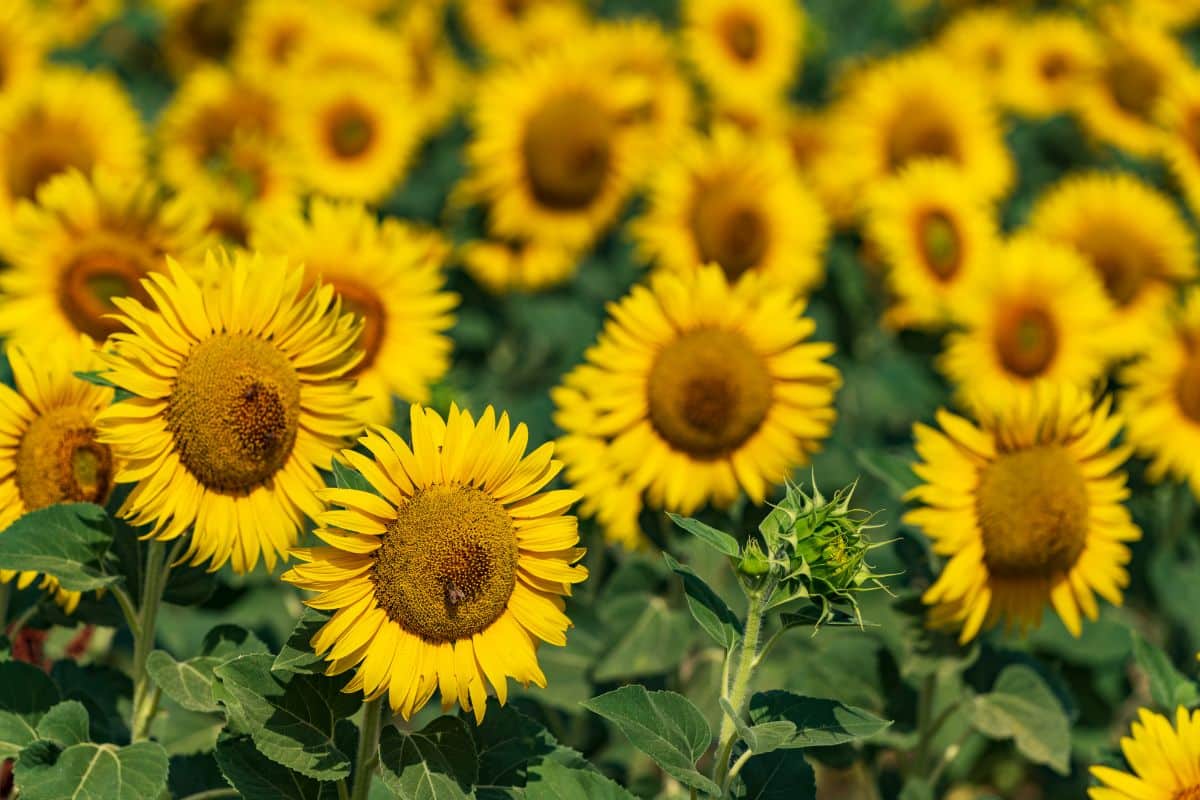
Sunflowers are an excellent choice for attracting a variety of pollinators and wildlife while also being aesthetically pleasing. They can be found as herbaceous annual or perennial flowers that are native to North and South America. Sunflowers require full sun and grow best in hardiness zones 4-9, USDA. They require moderate watering and prefer loose, well-drained, somewhat alkaline soil. These flowers have green foliage and are known for their bright yellow blooms in the summer and autumn months. The plants can reach impressive heights, ranging from 9-16 ft. When planting sunflower seeds, it is recommended to wait until after the last frost has ended. An interesting fact about sunflowers is that the world record for the tallest one ever grown is 30 feet, 1 inch, set in 2014 by Hans-Peter Schiffer. Another flower to consider planting is the Zinnia (Zinnia elegans).

Zinnia flowers come in a variety of captivating shapes, sizes, and colors. They are classified as herbaceous annual flowering plants hailing from North and South America. These plants thrive under full sun and can survive in USDA hardiness zones 2-8 with moderate watering. They prefer well-drained yet moist soil and bloom from late spring till the first frost. Zinnia flowers have green foliage, while their blooms range from lime green to yellow peach, salmon, and orange. These plants can grow up to 4 feet tall and can be planted as seeds in spring. Interestingly, the Spanish did not warmly receive zinnias when they were first introduced in Mexico, calling them the “sickness of the eye.” Another popular annual flowering plant is Marigolds (Tagetes erecta).

Marigolds are a popular choice for gardeners to plant alongside other crops due to their ability to ward off pests. They are classified as a flowering shrub that requires full sun exposure and moderate watering. Marigolds thrive in moderately fertile soil that is well-drained and mixed with sand or loam. Their blooms can be seen throughout spring, summer, and autumn and come in various shades of yellow, gold, and red. Marigolds can grow up to three feet tall and six inches wide. If you plan on planting marigold seeds, it’s best to wait until after the last frost has ended. In addition to their aesthetic appeal, marigolds also have medicinal properties such as anti-viral, anti-bacterial, anti-fungal, and anti-inflammatory benefits. Another plant option for gardeners is the Cosmos, scientifically known as Cosmos bipinnatus.
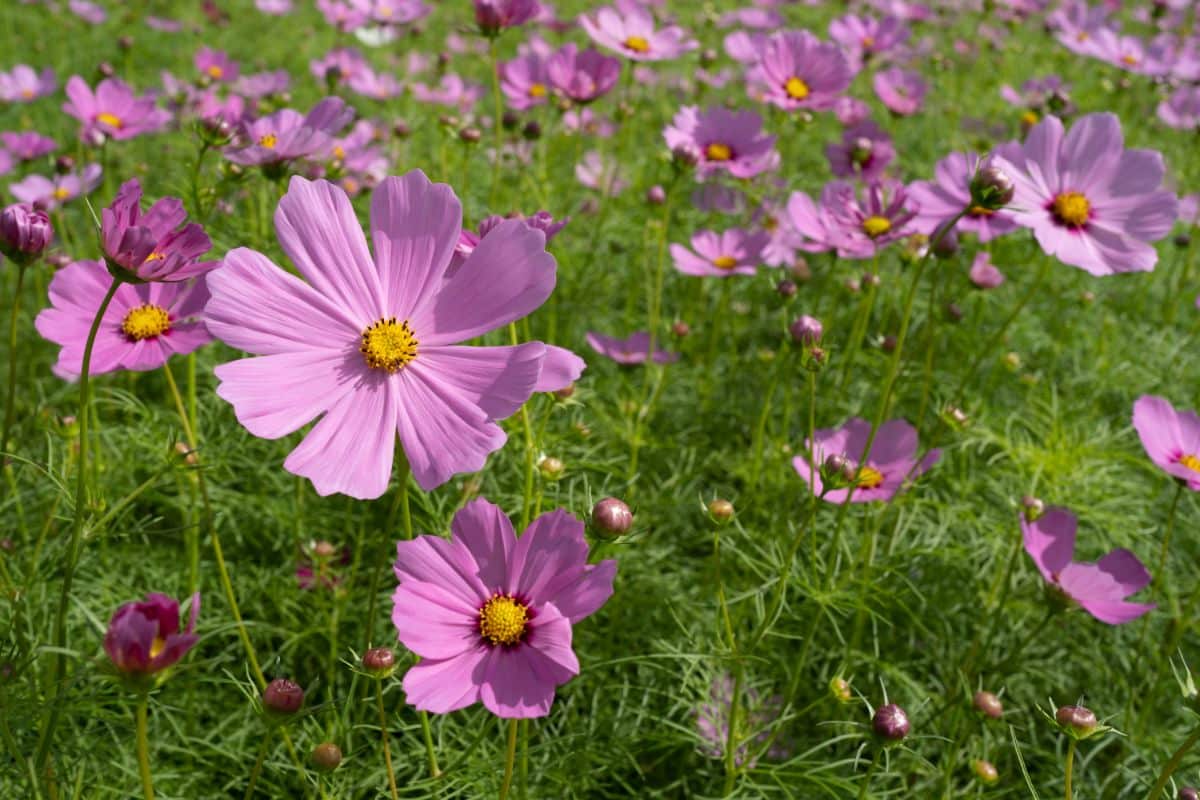
If you’re looking to add some natural beauty to a large area, cosmos are a fantastic choice. These herbaceous perennials hail from Mexico, Northern South America, and Central America, and thrive in full sun with moderate watering. They prefer well-drained soil with a sandy texture and bloom in the spring, summer, and autumn, boasting green foliage and flowers in shades of orange, pink, and white. Cosmos can grow anywhere from 18 to 60 inches tall and should be planted after the risk of frost has passed. As a bonus, their flowers are a natural mosquito repellent. Another great option for adding some color to your garden is the morning glory, scientifically known as Ipomoea purpurea.
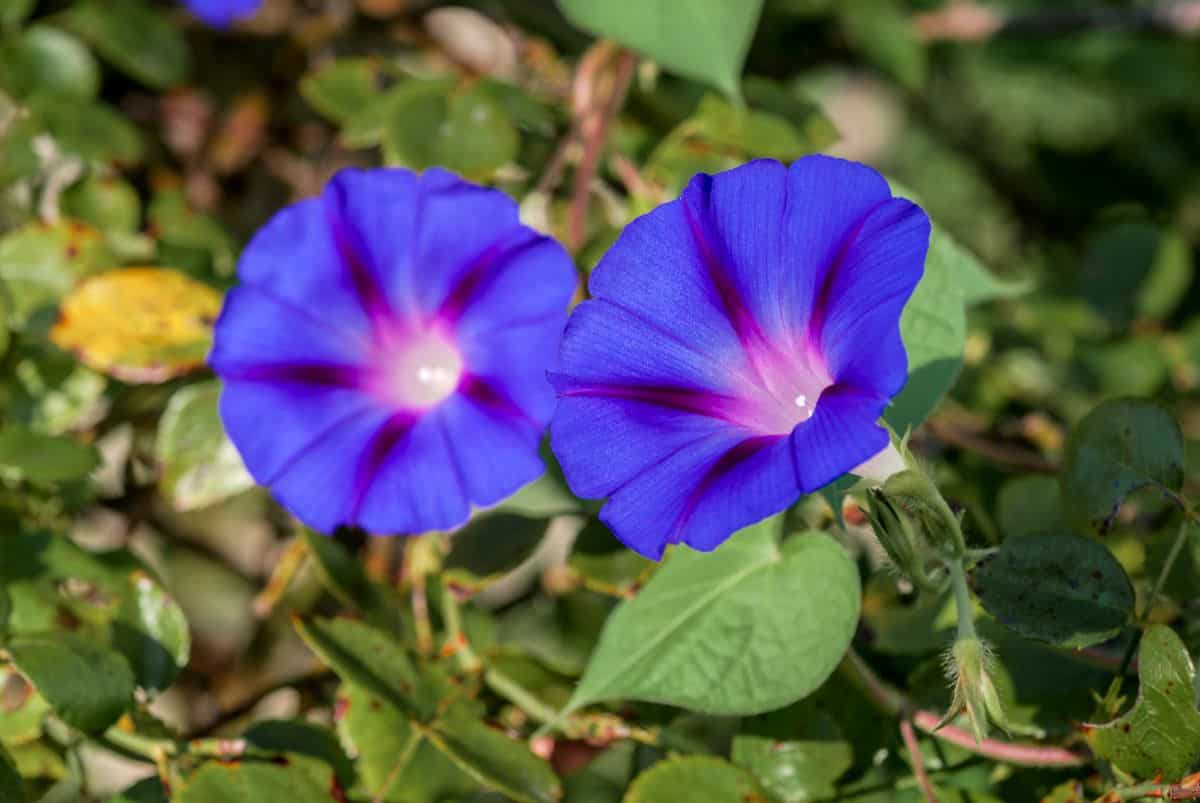
Are you on the lookout for a climbing flower that’s popular and visually appealing? Look no further than morning glories! These plants are herbaceous and can be annual or perennial, and they’re native to Central and South America. Morning glories thrive in full sun and are hardy in zones 1-11 according to USDA standards. They require moderate watering and should be pruned back during winter. For optimal growth, plant them in moderately fertile, well-drained soil. The flowers bloom from June to October and come in a range of colors including purple, blue, red, white, pink, and multi-colored. These plants can reach heights of 6-12 feet. It’s best to plant morning glory seeds 1-2 weeks after the last frost. However, it’s important to note that despite their beauty, morning glories won’t repel deer as they have been known to snack on the leaves and vines. Another climbing flower worth considering is the sweet pea (Lathyrus odoratus).

Sweet peas come in both annual and perennial varieties, but the latter typically lacks the same level of fragrance. These climbing plants are native to Sicily, southern Italy, and the Aegean Islands and thrive best in full sun with moderate watering and well-drained, moist loamy soil. When planted in early spring, sweet peas will bloom in blue, pink, purple, red, or white hues from spring to early summer in warmer climates and autumn in cooler ones. Sweet peas are known for their lovely scent and are a member of the legume family. Another annual flowering plant to consider is the Nasturtium (Tropaeolum majus).
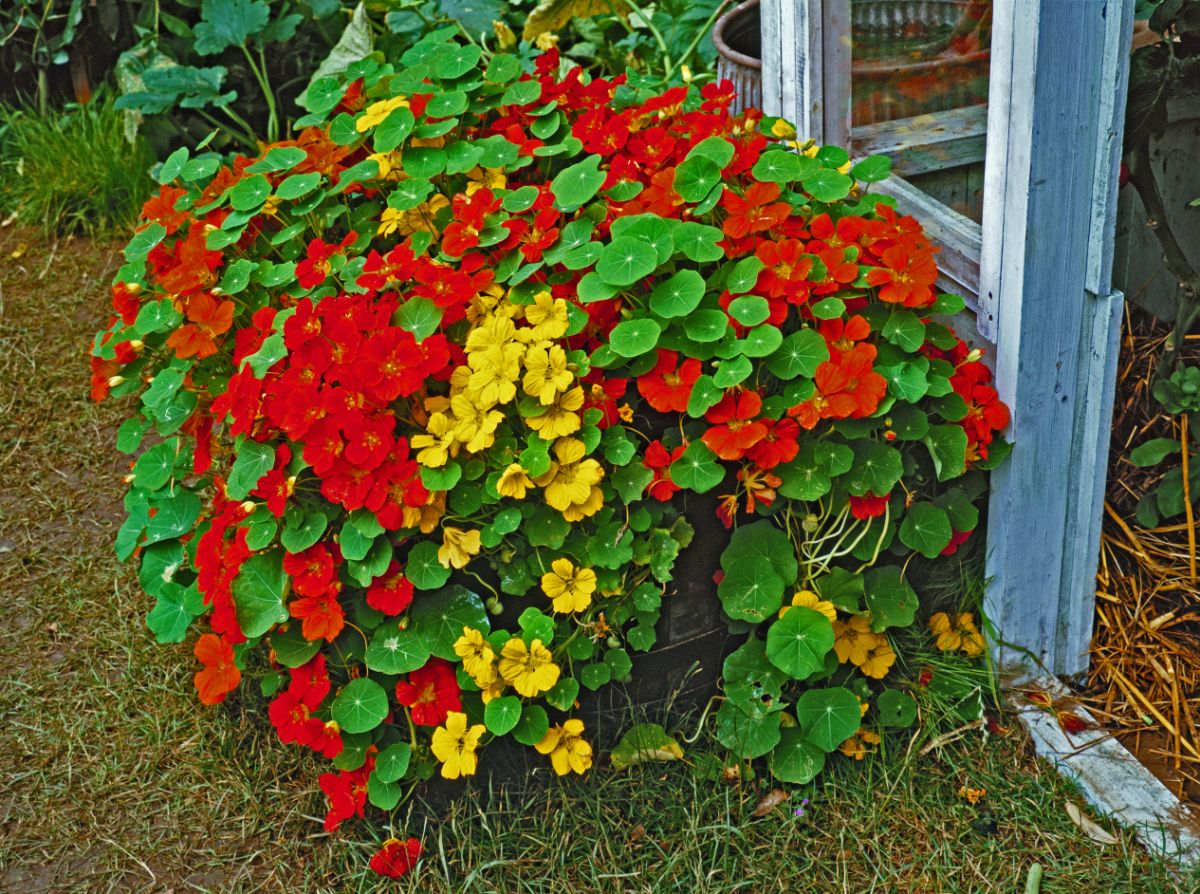
Nasturtiums, which are both delicious and popular companion plants, are herbaceous annual or perennial flowering plants native to South and Central America. These plants require full sun and can thrive in hardiness zones 9-11 according to the USDA. They need moderate watering and well-drained soil. Nasturtiums bloom from May to September, with green foliage and colorful flowers in shades of orange, red, yellow, and cream. They can grow anywhere from 6 inches to 10 feet tall. It is best to plant the seeds after the last frost until early summer. One interesting fact about nasturtiums is that their flowers, leaves, stems, and young seed pods are all edible and used in many dishes. Another commonly known plant is snapdragons (Antirrhinum majus).
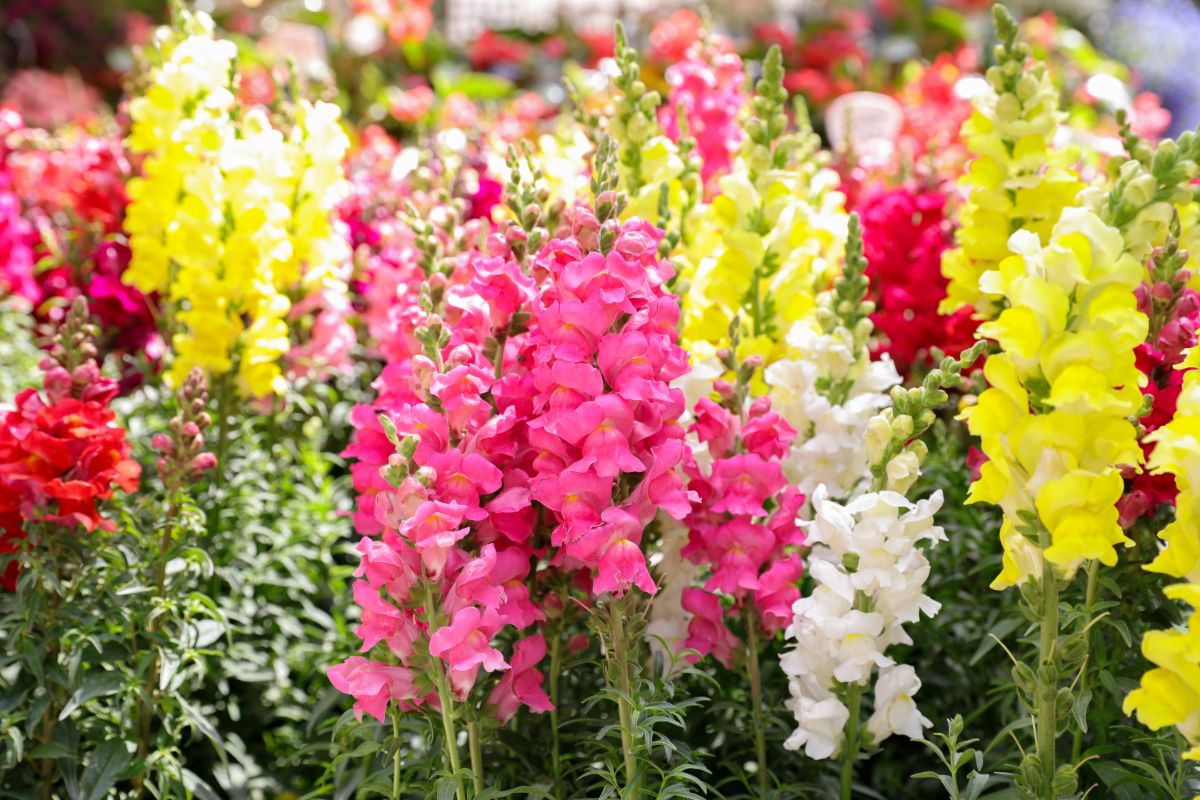
Snapdragons are versatile flowers that can be used in a variety of bouquets. They are annual or perennial plants depending on the climate, and are native to regions in the Mediterranean and Southern Europe. These plants require full sun and moderate watering with well-drained soil. They bloom from spring to autumn and their foliage is green while the flowers come in a range of colors such as white, yellow, pink, red, orange, peach, purple, and violet. Snapdragons grow to be 6-15 inches tall and should be planted after the last frost. Fun fact: snapdragons are great for attracting butterflies. Another interesting flower is the Fuchsia, also known as Fuchsia magellanica.
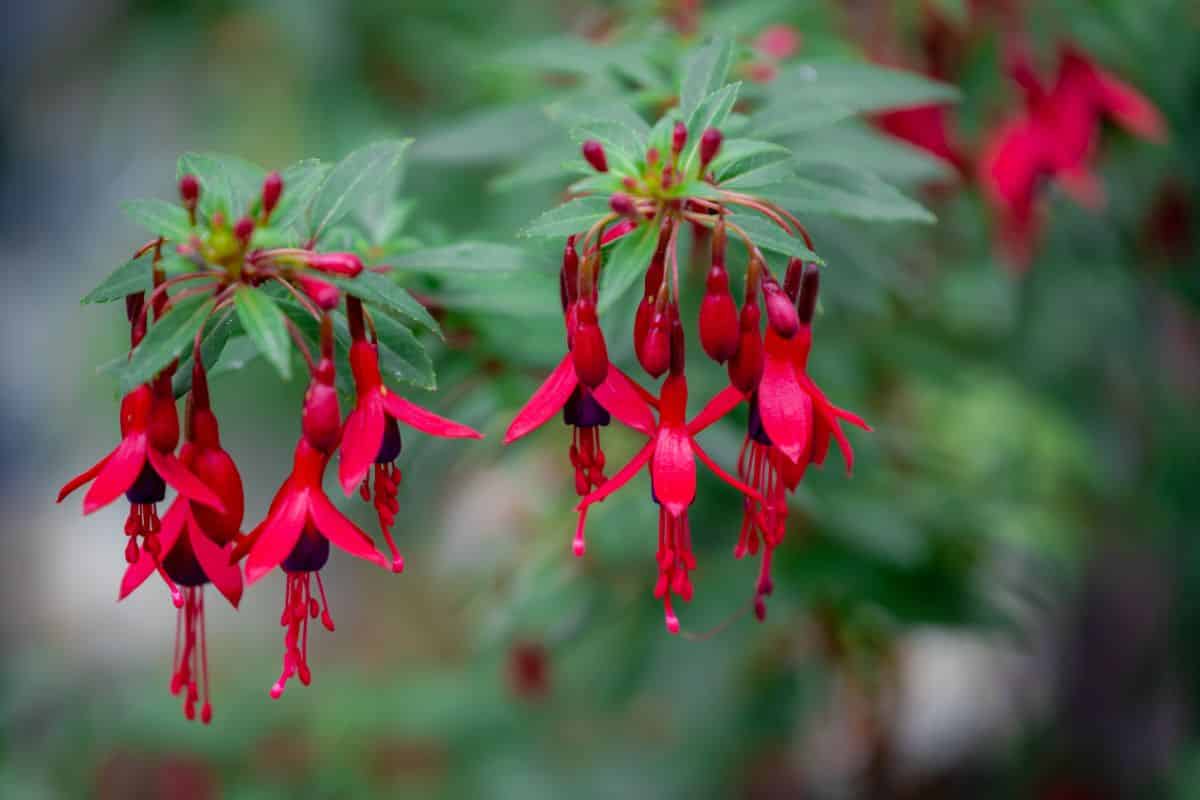
Did you know that hummingbirds are big fans of fuchsias? These perennial flowering plants are native to regions such as New Zealand, Tahiti, Central America, and South America. They thrive in full sun or partial shade and prefer well-drained soil with moderate watering. Fuchsias bloom from mid-April to May, boasting foliage in green and flowers in shades of purple, pink, magenta, red, and white that can grow up to 8 feet tall. If you’re interested in planting them from seeds, late spring (March/April) is the best time to do so. Fun fact: fuchsias are known for their ability to attract hummingbirds. Another great plant for attracting these beautiful birds is geraniums, also known as Pelargonium.

Geraniums have the advantage of being a natural repellent for irritating insects like mosquitoes, due to the numerous varieties available. These herbaceous perennial flowering plants are originally from Eastern North America and are best grown in full sun with afternoon shade in hotter climates. With moderate watering and well-drained soil, geraniums can bloom from spring to autumn and typically have green foliage with flowers that come in white, pink, red, lavender, purple, magenta, and rose. They grow to a height of 3-24 inches and seeds should be planted about 10 weeks prior to the last frost. One interesting fact to note is that geraniums are poisonous when ingested by pets such as dogs and cats. Another plant to consider is Dahlias (Dahlia pinnata).
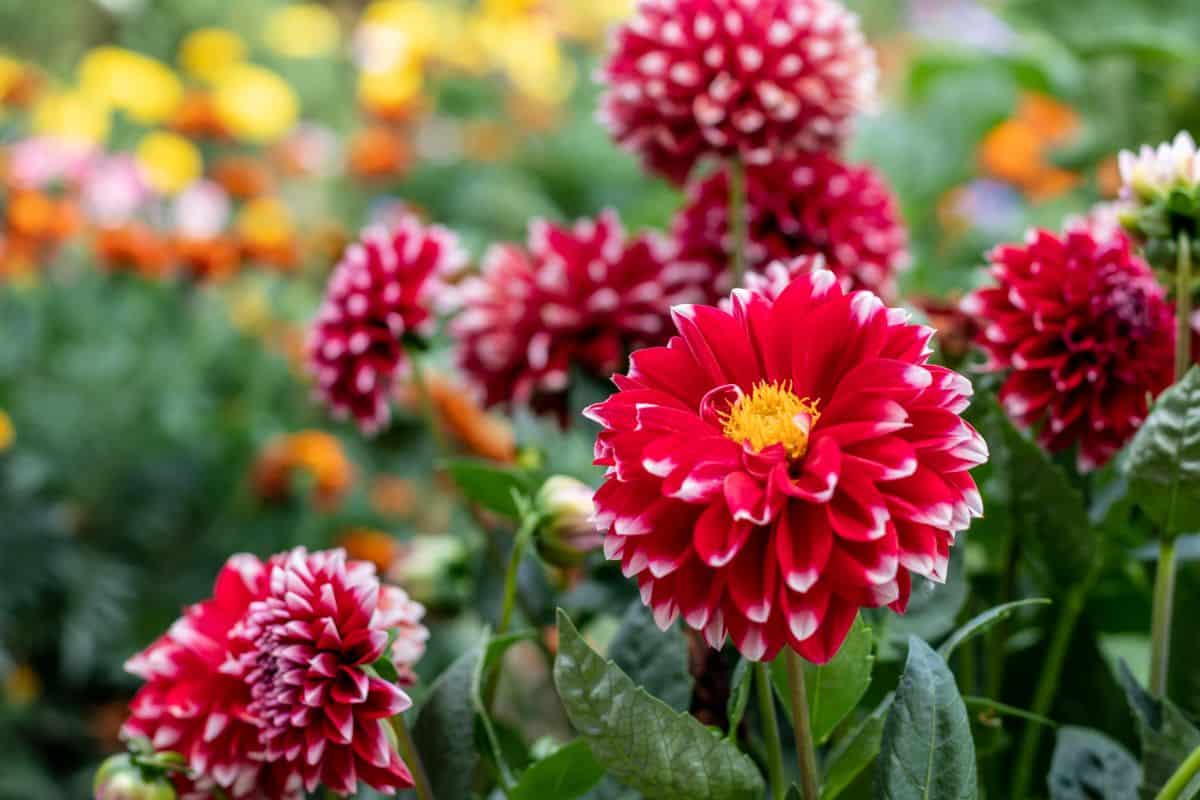
Dahlias are a popular choice for their variety of sizes, shapes, and colors. They not only look great in gardens, but also make for beautiful cut flower arrangements. These annual flowering plants are native to Mexico and Guatemala, and require full sun and moderate watering. They thrive in well-drained, sandy soil and bloom from July to September with various shades of green foliage and colorful flowers in pink, purple, red, orange, yellow, and white. Dahlias can grow anywhere from 1 to 6 feet tall and should be planted after the last frost. A fun fact about dahlias is that before the Spanish Conquest, the Aztecs grew the roots of Dahlia flowers as a food crop. Another plant worth considering for your garden is the Ornamental Onion (Allium schubertii).
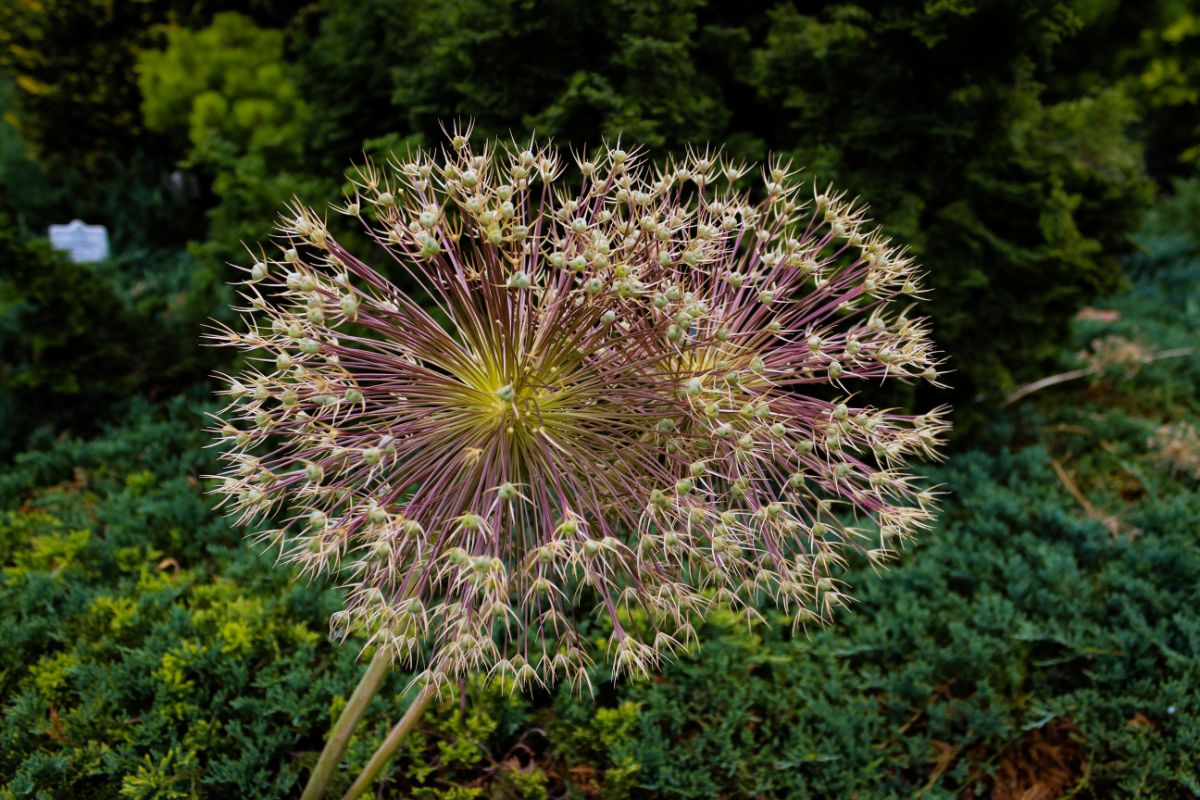
If you want to attract bees and butterflies to your garden, consider planting Allium flowers. These perennial flowers are native to the Eastern Mediterranean and North Africa and thrive in full sun with dry to medium moisture, well-drained soil. They bloom from spring to summer in lavender, purple, pink, or white and can reach a height of 12-36 inches. An interesting fact about this flower is that it belongs to the same genus as onions, chives, garlic, and leeks. Another great flower to plant in your garden is the Daffodil, also known as Narcissus. These flowers can be planted 6-8 weeks before the last frost and come in a variety of colors and sizes.
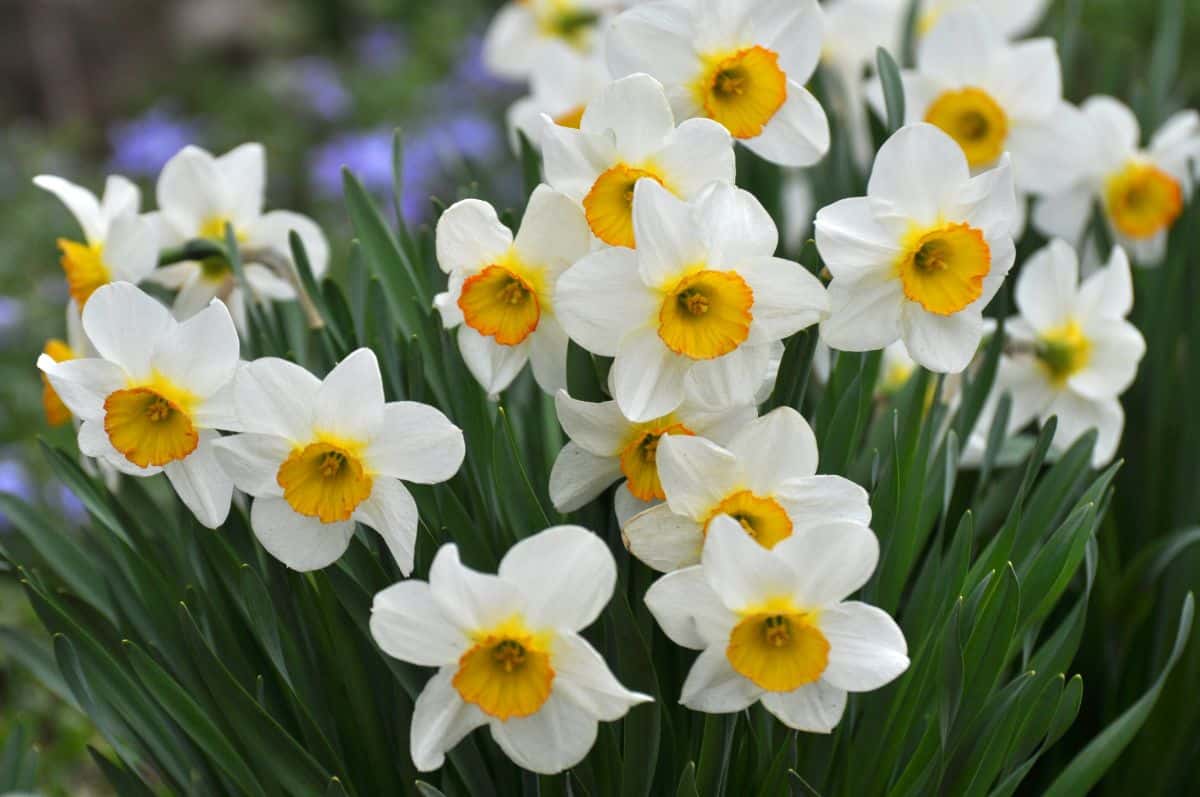
The daffodil, a perennial flowering plant, is commonly associated with the arrival of spring. It can be found in North Africa, Europe, Western Asia, and the Mediterranean region. Daffodils prefer full sun and well-drained soil with light to moderate watering. They bloom in late winter or early spring and have green foliage with yellow, orange, or white flowers that can grow up to 6-30 inches tall. Planting seeds should be done in autumn. An interesting fact about daffodils is that ancient Romans highly valued them for their supposed healing properties found in the sap. Another popular perennial flowering plant is the daylily (Hemerocallis fulva).
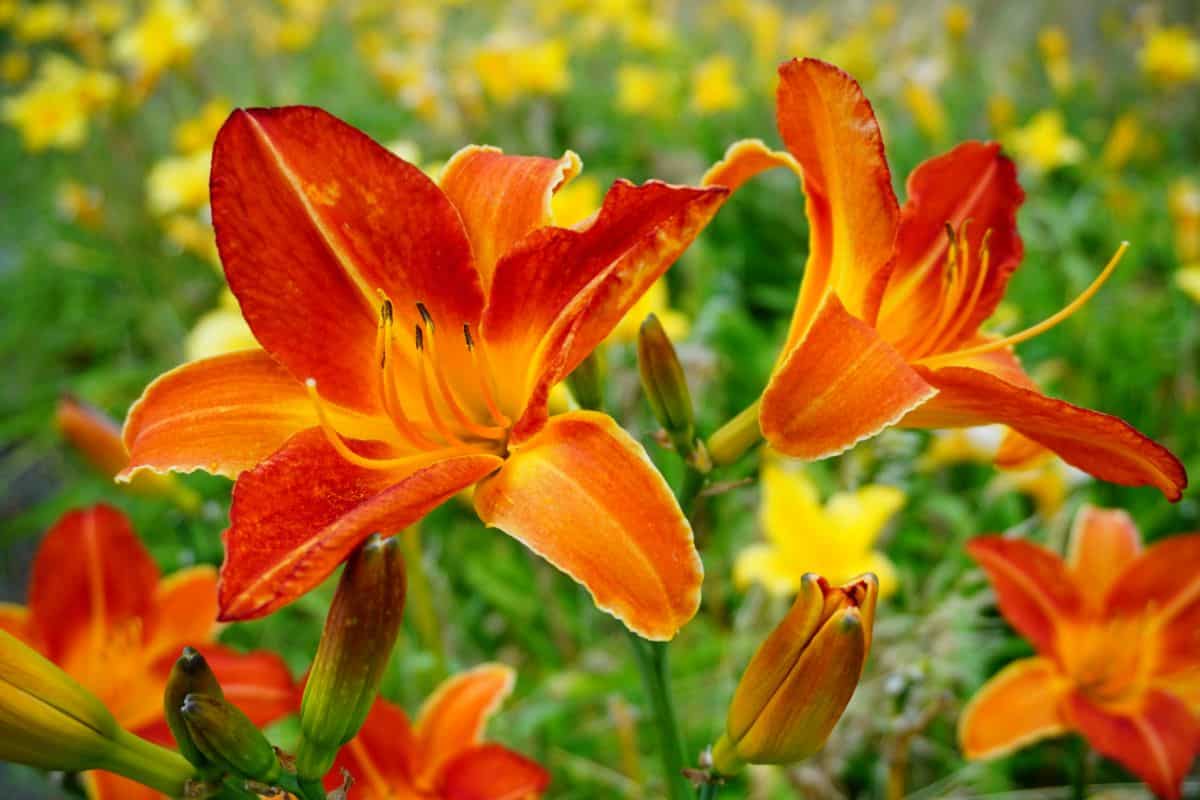
Daylilies are a popular addition to any garden bed due to their perennial flowering nature. These plants are native to Asia and thrive in full sun with well-drained, rich soil. They can tolerate moderate watering, but require more water during the summer months. Daylilies bloom in mid-spring, with flowers available in yellow, red, pink, purple, and melon hues. They typically grow to a height of 12-48 inches and should be planted as seeds in the spring. An interesting fact about daylilies is that they are not actually a type of lily and grow from tubers rather than bulbs. Another great plant to consider adding to your garden is Lupines (Lupinus).

Lupines are a favorite among pollinators and humans, but unfortunately, deer do not share the same sentiment. These flowers can grow as an annual or short-lived perennial and are native to regions such as the Mediterranean, Americas, and Africa. They thrive in full sun with moderate watering and loose, sandy soil. Lupines bloom from late spring to mid-summer and come in various colors like blue, yellow, white, pink, and purple. They can grow up to five feet tall and are best planted during spring or early autumn. An interesting fact about lupines is that they attract bees and hummingbirds while repelling deer. Another flower that shares similar qualities is the Wax Begonia or Begonia x semperflorens-cultorum.
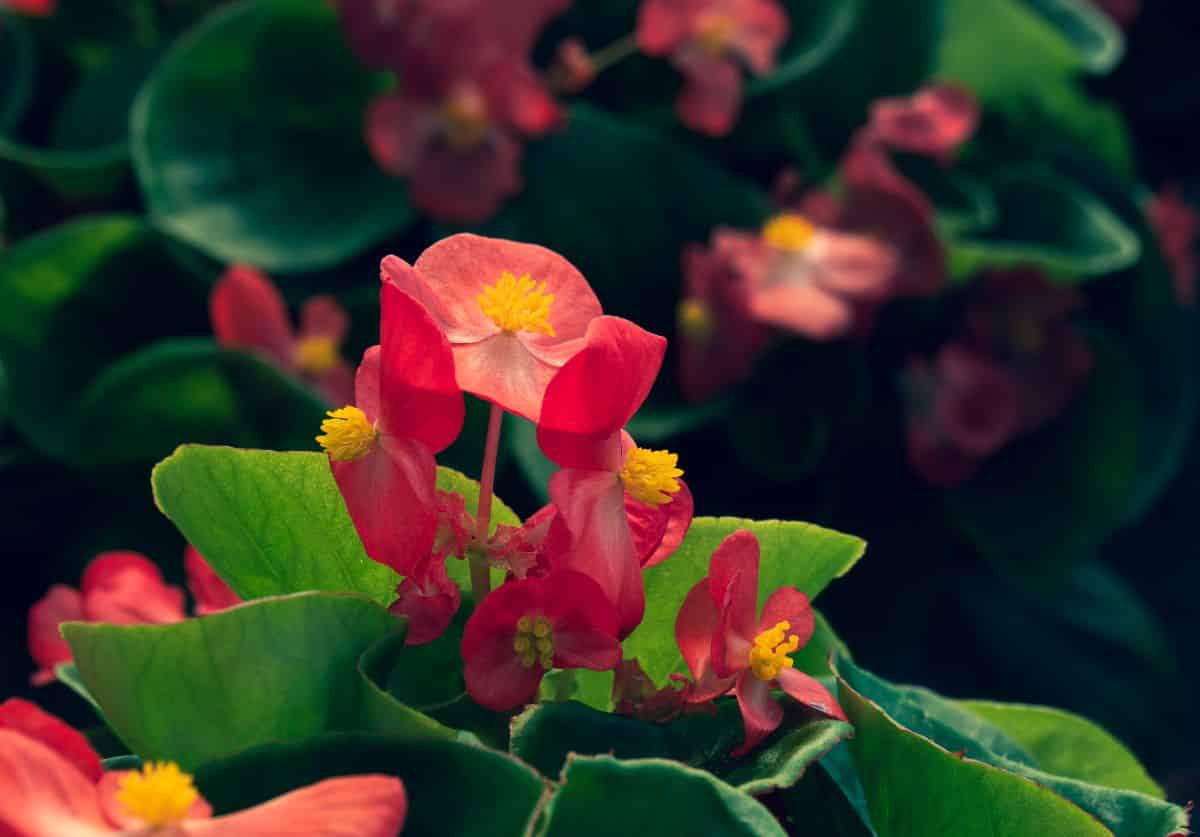
Begonias are a flower that can thrive in a variety of containers, making them a versatile addition to any garden. These herbaceous perennials are native to tropical and subtropical regions, and prefer partial sun or shade. They are hardy in Zones 10-11 (USDA), and require moderate watering and well-drained soil. Begonias bloom in the summer and autumn months, with pink, white, orange, and yellow flowers against green foliage. They can grow to be 6-12 inches tall, and should be planted from mid to late January. Interestingly, begonias were once used to polish swords due to their ability to leave a shiny finish. Another popular flower to consider is pansies (Viola tricolor var. hortensis).
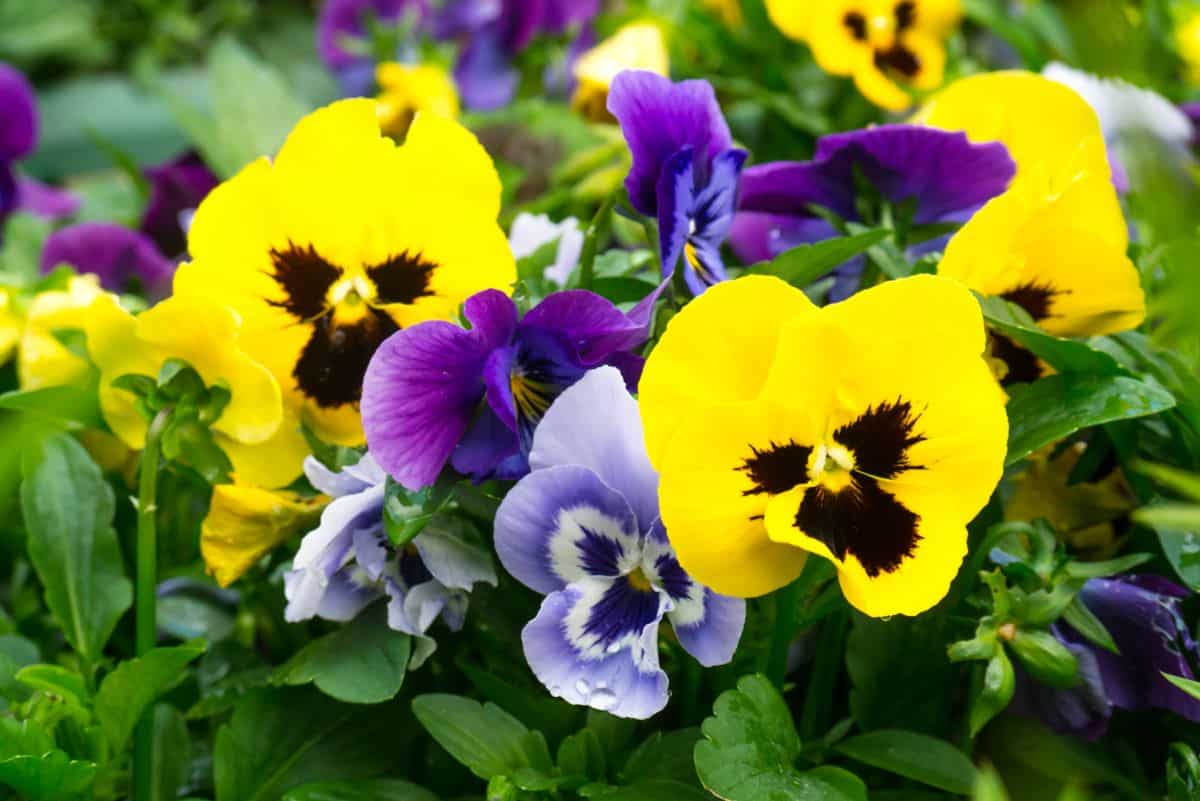
Pansies are known for their unique little faces, which give them a charming personality. These annual hybrid flowering plants are native to North America and Europe and thrive in light sun or partial shade. They can survive in hardiness zones 7-10, USDA, and overwinter in zones 4-6 USDA. Pansies require weekly watering, less if there is natural rain, and prefer dry, well-drained soil. Their foliage is green, while their blooms come in white, yellow, purple, and blue, appearing in spring to summer in cooler climates and autumn to winter in warmer areas. If you want to plant pansy seeds, do it in summer to early autumn. Besides their lovely appearance, pansies are hardy and disease-resistant with markings resembling little faces, making them a fascinating addition to any garden.
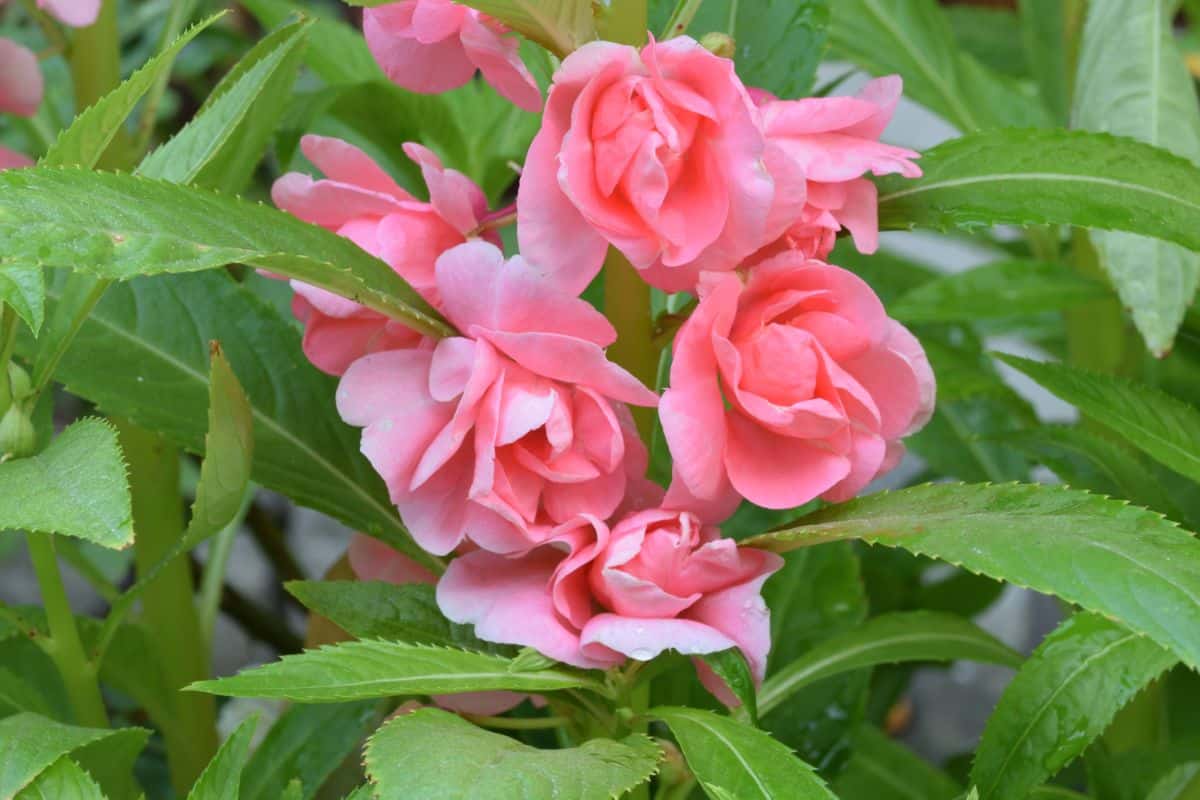
The popularity of impatiens is largely due to their delicate-looking blossoms. These herbaceous annual or perennial plants are native to Africa and thrive in partial to full shade with moderate watering in moist, loamy soil. From June until the first frost, impatiens bloom in a range of colors including white, red, pink, violet, coral, purple, and yellow, complementing their green to dark red foliage. These plants can grow up to 6-24 inches in height and should be planted from early to mid-February. An interesting fact about impatiens is that they get their name from their unique method of seed spreading – shooting from the pod when ripe. Another popular flowering plant, the carnation (Dianthus caryophyllus), also adds beauty to gardens and landscapes.
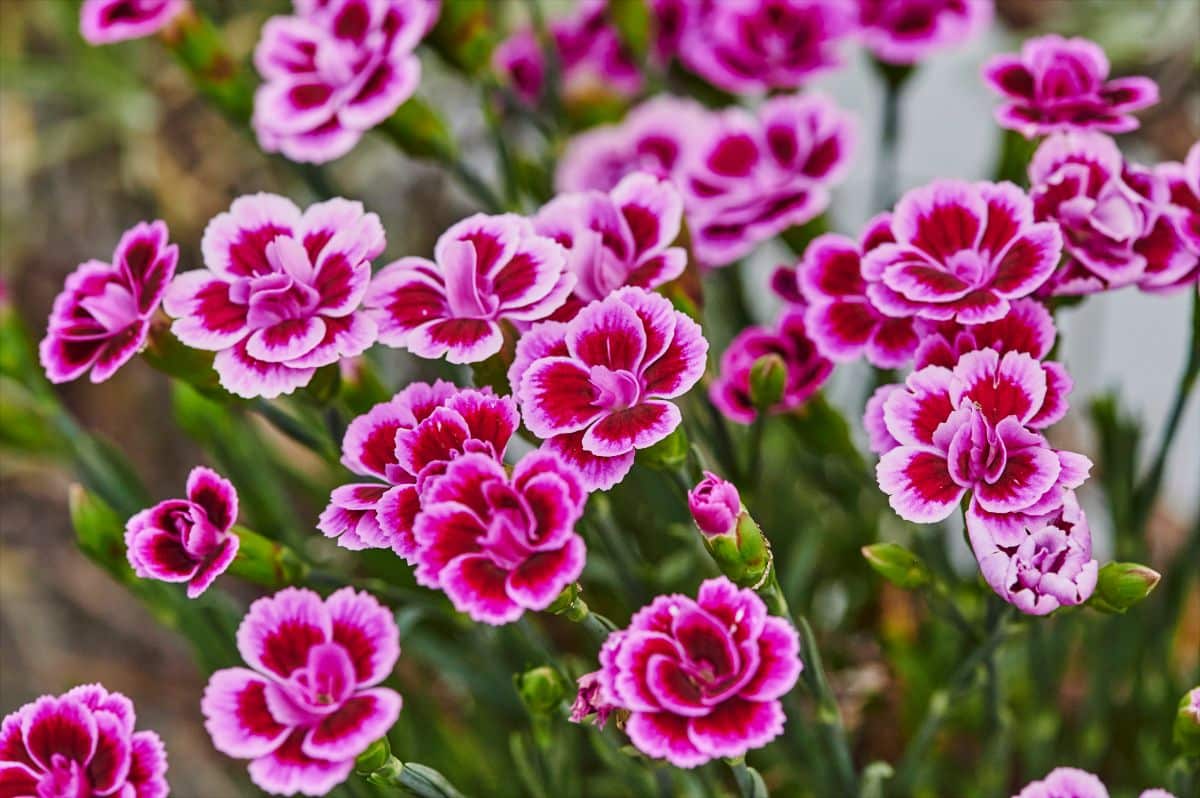
Dianthus, commonly known as “pinks,” are herbaceous annual or perennial plants native to Greece, Italy, Spain, and other Mediterranean countries. They thrive in partial to full shade and require light watering, with more watering needed during the summer months. Dianthus blooms from May to August and comes in a variety of colors, including red, purple, pink, and white. The plant grows to a height of 3-5 inches and prefers well-drained soil. Seeds should be planted in early spring or autumn.
Carnations, a type of dianthus, are known for their strong, spicy, and floral aroma with clove-like undertones. If your plant’s leaves are rotting, it may be a sign of over-watering and root rot. Combat this issue by stirring up the soil with a screwdriver, stick, or pencil and avoiding overwatering. Yellow leaves may indicate stress caused by under-watering, over-watering, changes in the environment, or lack of nutrients due to poor soil nutrients.
Hardiness zones refer to regions where a particular plant is known to thrive. The USDA sets aside each region using the annual minimum temperature as one of the factors. Plants may grow out of their hardiness zone but will require special intervention. To prevent rodents and deer from eating your plants, consider strategically growing plants that repel critters or spraying susceptible plants with an all-natural animal repellent such as Natural Armor Animal Rodent Repellent Spray.
If you’re looking for low-maintenance shrubs and flowers to grow, dianthus is a great place to start. Novice and experienced gardeners alike from various hardiness zones enjoy cultivating this popular plant. Happy planting!





